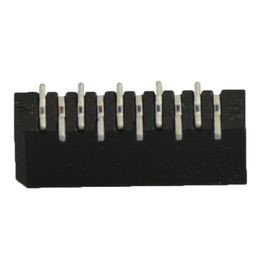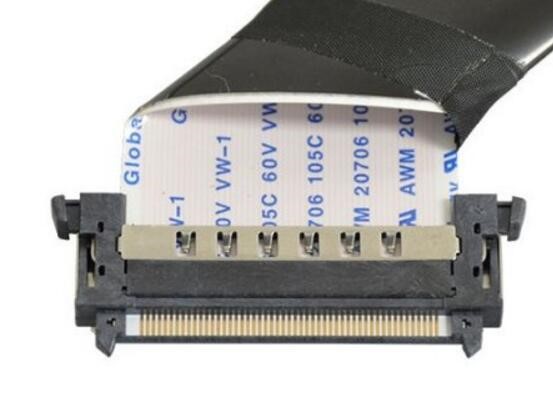Today's connector forms and structures are
ever-changing. There are various types of connectors depending on the application
object, frequency, power, and application environment. The FFC connector is a
flexible flat cable connector. It is a new type of data cable that is pressed
together with a high-tech automated equipment line using PET insulation and
extremely thin tinned flat copper wire. It has a soft, freely bendable fold.
The utility model has the advantages of thin thickness, small volume, simple
connection, convenient disassembly and easy resolution of electromagnetic
shielding (EMI). The following mainly talks about the difference between FFC
connectors and FPC connectors, and the types commonly used by FFC connectors.

The
difference between FFC connector and FPC connector
FFC connectors are flexible flat cable
connectors, and FPC connectors are flexible printed circuits. The way they are
formed is different in terms of the manufacture of their two connectors:
1. FFC is a flat copper foil sandwiched
between two upper and lower insulation foil films. The finished product is
simpler and thicker.
2. FPC is a chemical circuit that treats
FCCL (Flexible Copper Clad) to obtain flexible circuit boards with different
single-sided double-sided and multi-layer structures.
In terms of price, natural FFC connectors
are much cheaper, and if you consider production costs, more companies will
like to use the relevant design of FFC connectors.

FFC
connector 7 common types
Type A: the two ends are connected and the
reinforcing plate is attached to the insulating tape;
Type B: The reinforcing plate is directly
pasted on the insulating adhesive tape;
Type C: The reinforcing plates at both ends
are directly pasted on the conductor;
Type D: The reinforcing plates at both ends
are directly pasted on the conductor;
Type E: One end reinforcing plate is
attached to the insulating adhesive paper, and the other end is directly
soldered;
Type F: The reinforcing plates at both ends
are directly attached to the insulating adhesive paper, and the inner half is
peeled off;
Type G: Direct soldering at both ends.
In general, the development of today's FFC
connector technology has the following characteristics: high speed and
digitization of signal transmission, integration of various signal
transmissions, and miniaturization of product volume, cost
reduction of products, termination of contacts, Ways of surface labeling,
module combination, convenience of plugging and unplugging, etc.
Name: Carmen He
Mp/WhatsApp: +86-15626431755
Email:Carmen.He@kalelectronics.com
Teams:Carmen.he@kalelectronics.onmicrosoft.com